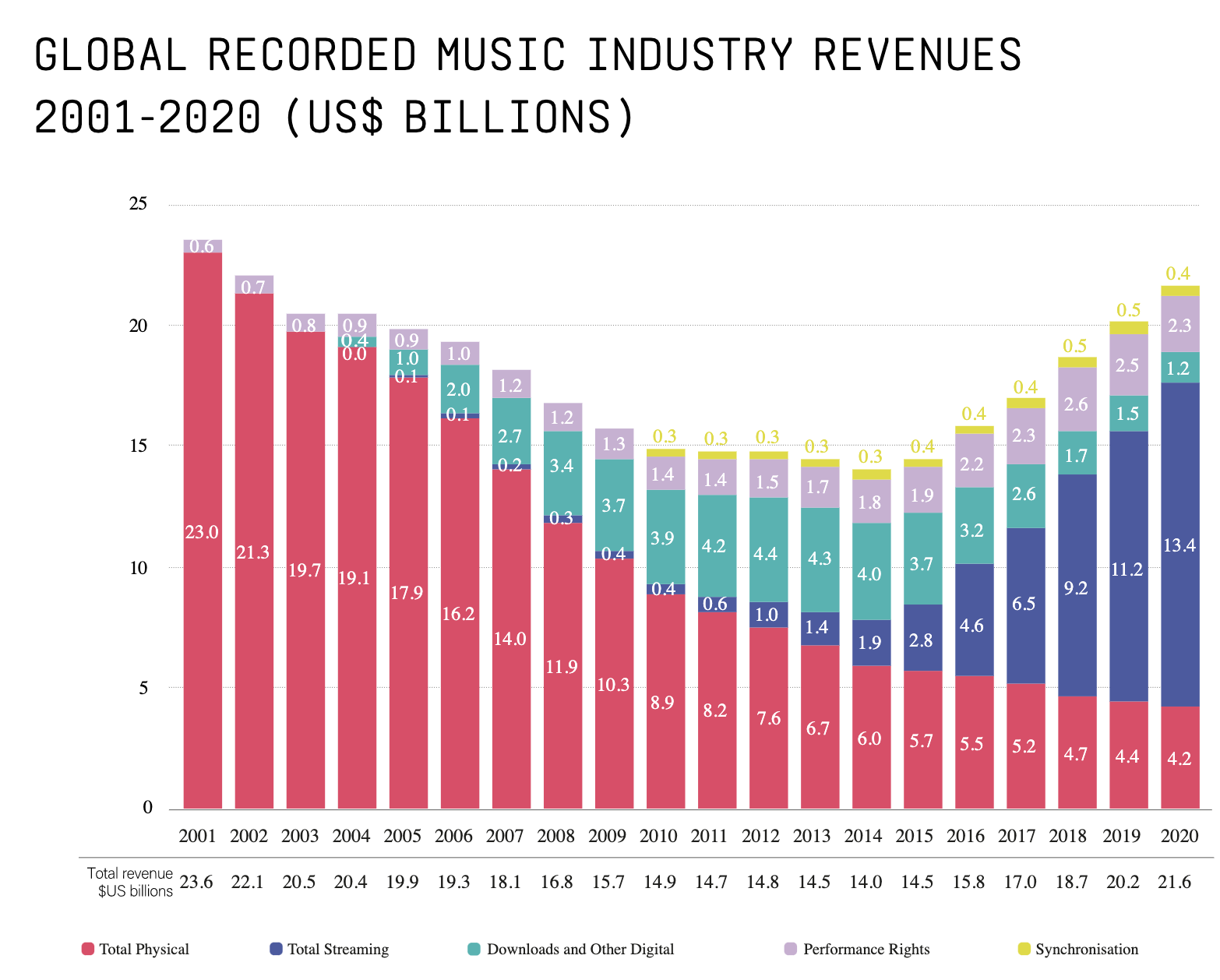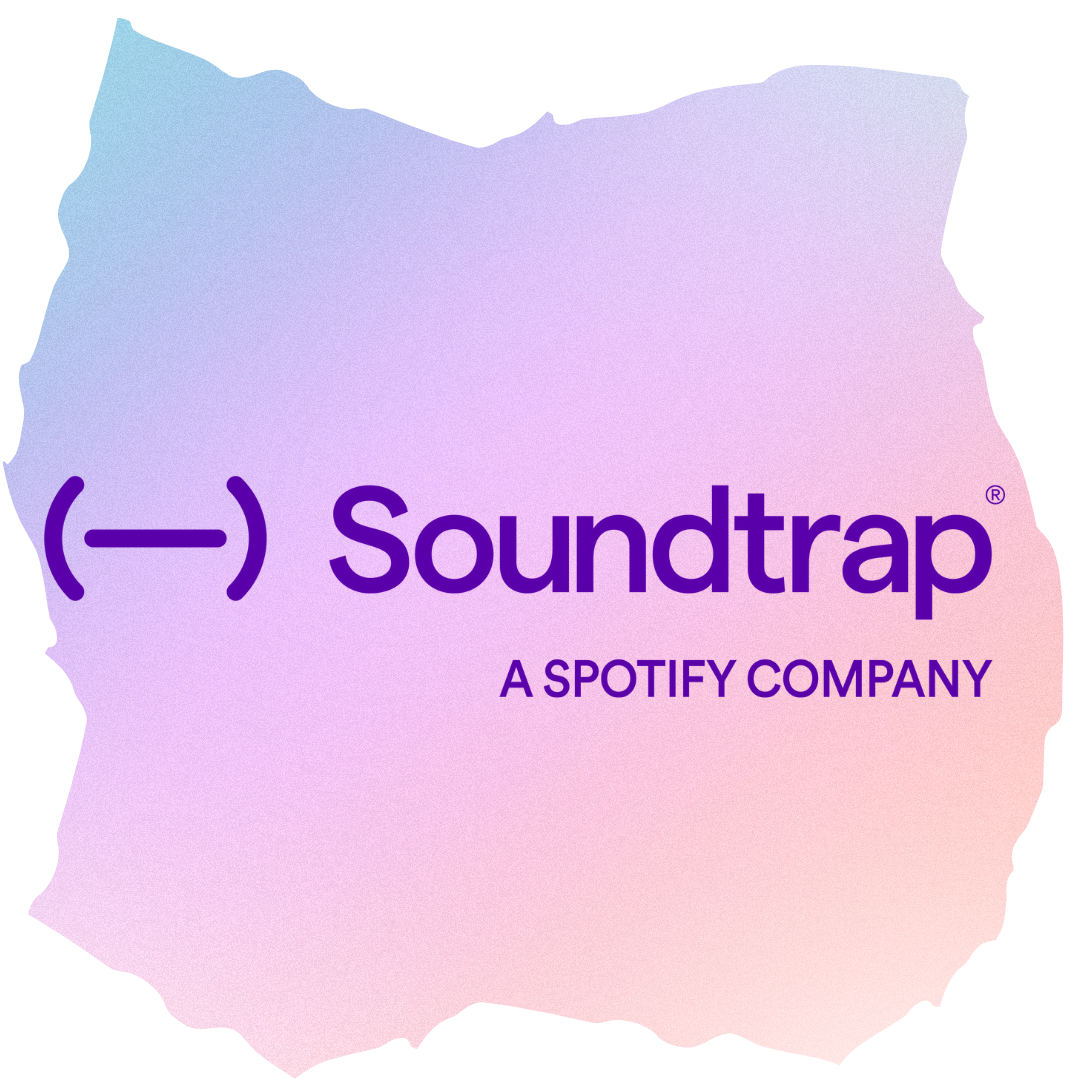Despite these high profile cases of major artists versus Spotify, the streaming service claims their goal is not to take advantage of struggling artists. The platform aims to help move the industry from a transaction based industry to an access based one. The major issue that these artists have with the company is the small amount of royalties they receive. However, factors unrelated to number of streams feed into the reason behind Spotify’s lower revenue. Compared to other companies, like Google and Apple, Spotify does not have other revenue streams to support the platform paying out large amounts of royalties (Butler, 2022). Total revenue comes from the number of subscriptions and some advertising space. The number of subscribers is minimal compared to the total number of streams. So mathematically it makes sense why the pay per stream is so low, since total revenue from subscribers and advertising is divided by the almost limitless number of streams. It is also important to point out that Spotify does not pay artists directly. The platform pays its rights holders, which is about 70% of their revenue which is “a broadly conventional rate for the right to use music” (Marshall, 2015). Therefore, the payments artists receive “reflects their contract with their record label and not the amount that Spotify pays out” (Marshall, 2015). However, the deals that have been constructed between these labels and Spotify have been known to be less than fair to the artists that are being represented by them. Many of the major labels control the most popular playlists shown on the platform, and therefore will promote their own artists and limit potential exposure of less represented artists (Pelly, 2017).
Kristelia García, an expert on music copyright law, was kind enough to offer her opinion on The Music Modernization Act, Spotify, and the future of music copyright law. She is currently an Associate Professor of Law at the University of Colorado Law School, where she has been since 2014. García has written extensively on the topic of music copyright and infringement, music streaming, and music artist income. In her article “Pay-to-Playlist: The Commerce of Music Streaming,” García examines one of the benefits that streaming services like Spotify offer for artists. She explains that Spotify’s editorial playlists, which usually require artists to pay for a chance to get a spot, “offer opportunities for independent artists and labels to enter a “lottery” for coveted Spotify-owned editorial playlist spots like Today’s Top Hits or RapCaviar” (Buccafusco, García 70).

These playlist spots can expose relatively unknown artists to massive audiences and offer an opportunity to independent artists to reach a wider audience without paying huge sums of money for advertising. In her article “Royalty Securitization,” García also notes how playlists like Spotify’s “Time Capsule,” which is a playlist consisting of songs that were popular decades ago, “leads to more streaming, but importantly, to greater longevity for a song’s revenue stream.” She explains that this increases a song’s value, and even makes it an attractive investment. Clearly, the benefits that Spotify offers to artists cannot be ignored. When asked about her perception of Spotify and their business practices, García explained that “we have a love-hate relationship with Spotify because it simultaneously does a great job fulfilling a market demand (that for seamless and convenient music streaming) while also leaving lots of room for improvement (higher payouts, more transparency, etc.).” García acknowledges that while many may benefit from the easy access to music that Spotify provides, the company has many flaws that need to be addressed.
It is also important to note that not every person who uploads a track onto Spotify is an aspiring artist, or someone who is dependent on this revenue stream alone. According to Spotify, out of the millions of uploaders on the platform, there are only about “200,000 professional or professionally aspiring recording acts globally” (Loud & Clear, 2022). This is based on having at least ten tracks and about 10,000 monthly listeners, showing a body of work and an audience. This also contributes to the frequently quoted statistics of tracks making percentages of a penny off of a stream.


Amid these cases and the continuing growth of the streaming industry, Spotify has made an effort to be more transparent about its business model and payment information. In March 2021, the Loud and Clear website was launched providing in-depth information on how the streaming industry works, how artists get paid, and Spotify’s contributions to the overall industry and to individual artists. This includes the $7 billion payout to rights holders in 2021, being the “largest sum paid by one retailer to the music industry in one year in history” (Loud & Clear, 2022). The streaming service has also developed tools and resources to continue to help artists in ways other than direct monetary compensation. Spotify for Artists offers resources and strategies like step-by-step instructions on how to get started on the platform, how to grow fanbases, and how to get connected with distributors (Spotify for Artists, 2022). Soundtrap is an online digital audio workstation that can be edited from any device, and allows for collaboration between artists (Soundtrap, 2022). These tools help Spotify’s case to further show that this platform is not a corporate machine that is against artists. As the worlds of technology, business and art continue to evolve together, collaboration is necessary for success. While Spotify has dealt with accusations of low payments due to its current business model, there is no indication that they will keep the payments low as they continue to grow and gain more revenue.
